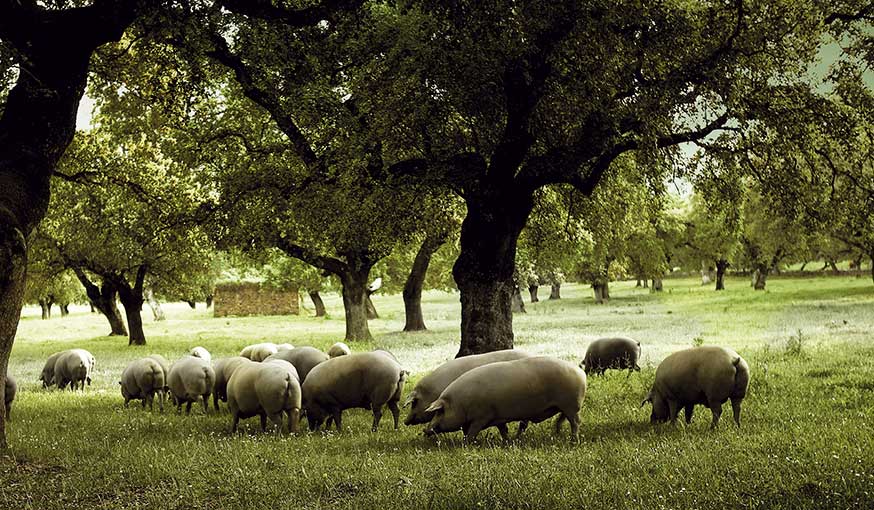
This period coincides with the optimal period of ripeness of acorn, that together with natural pastures will become the base of the feeding of ibérico pigs intended for the elaboration of jamón de bellota. This farming and feeding method, based on squeezing the own resources of the dehesa, through acorns, shrubs and natural herbs, is what we call a montanera.
The quality standard of the ibérico products establishes that these animals should enter the montanera between the 1st October and 15th December, and they are slaughtered between the 15th December and 31st May.
This will be thelast period of rearing, in which these animals will have to gain a minimum of 46 kilos, and they will have to be at least 60 days being fed exclusively this way.
During the montanerathe animal strolls freely along the dehesaand lives a relaxed way, it only has to think about eating and sleeping.
Every year, the montanerawill depend on the weather conditions, which are a key element in the final quality of each jamón de bellota. That is why vintages are as important in these jamónas they are for wine. Each autumn is different, and according to rain and temperatures, holm oaks will produce more or less acorns of better or worse quality.
The number of pigs that we will be able to feed per hectare will depend on the amount of acornavailable during that montanera; the farmer will always have to look fore the balance between grass and acorn.
The ibérico pig, thanks to its great sense of smell, looks for the sweetest and best acorns and leaves for later those which are not ripe. Another curious fact is that the ibéricopig does not eat the whole acorn; it peels it first in order to eat only its fruit, and it discards the peel.
In the montanera, ripe acorns fall on a mantle of fresh herbs that protect them from the mud and avoid their deterioration.
The fruit of the holm oak, cork oak and gall oak usually have different periods of fruition that usually overlap.
The intake of aromatic herbs and natural pastures is also essential for this diet because it helps the animal to satisfy and provides him with nutrients that are highly beneficial and that complement it.
This type of feeding does not only have an influence on the taste or texture of the jamón, but also on its nutritional properties. Its nutritional composition, thanks to acorn, has high levels of oleic fat, one of the main elements of virgin olive oil that makes of this jamóna product that is, apart from delicious, beneficial to one’s health.